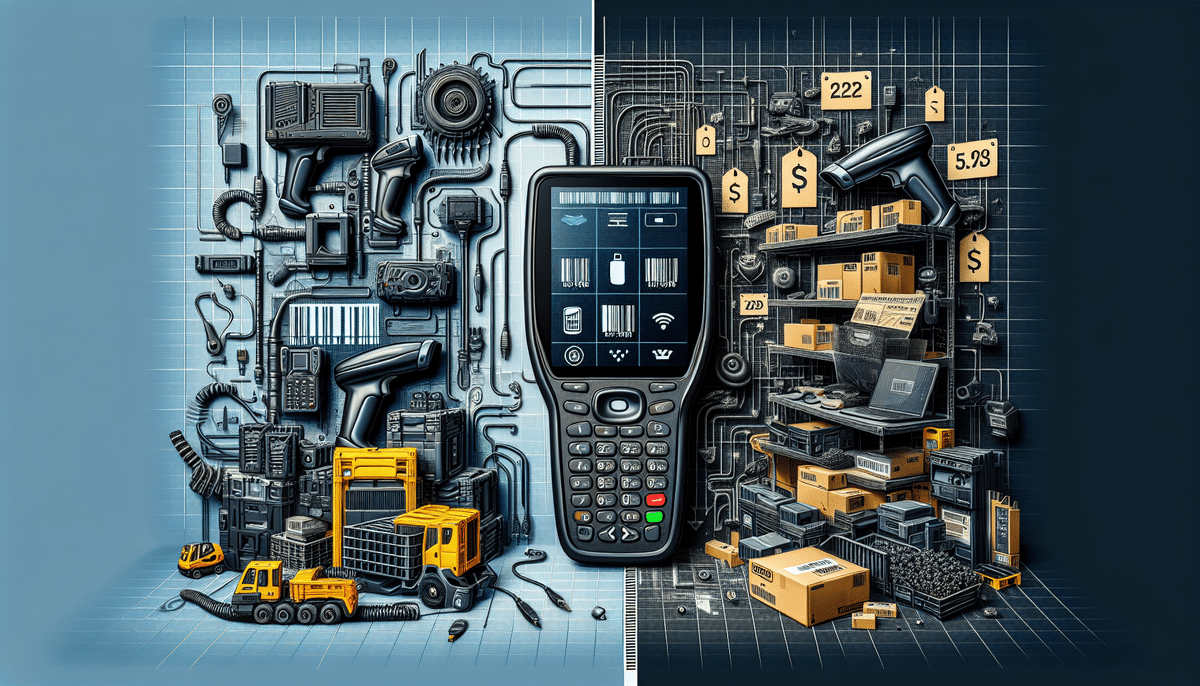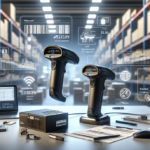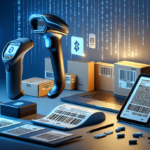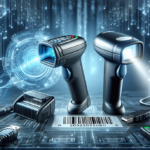Zebra DS8178 vs Symbol LS2208: Comprehensive Comparison
Barcode scanners are indispensable tools for businesses, facilitating efficient inventory management, tracking, and sales processes. With a vast array of options on the market, choosing the right scanner can be daunting. This article provides an in-depth comparison of two popular barcode scanners from Zebra Technologies—the DS8178 and the Symbol LS2208—to aid you in making an informed decision for your business needs.
Introduction to Barcode Scanners
Barcode scanners are electronic devices designed to read and decode printed barcodes, which consist of varying widths of vertical bars and spaces. These barcodes encode essential information such as product details, serial numbers, and batch numbers. The scanner emits a light source that illuminates the barcode, and a photoelectric cell captures the reflected light to convert it into a digital signal. This signal is then transmitted to a computer or other electronic device for processing.
There are several types of barcode scanners available, each catering to different business environments:
- Handheld Scanners: Portable and versatile, commonly used in retail stores and warehouses.
- Fixed-Mount Scanners: Mounted on conveyor belts in manufacturing and production lines for automatic scanning.
- Presentation Scanners: Integrated into point-of-sale systems, allowing customers or cashiers to present the barcode for scanning.
Barcode scanners have revolutionized business operations by enhancing efficiency and accuracy in inventory management, sales tracking, and supply chain management. They also empower consumers with the ability to compare prices and make informed purchasing decisions. With the exponential growth of e-commerce, barcode scanners have become vital for online retailers to manage inventory and fulfill orders swiftly.
Understanding Barcode Types: 1D vs 2D
Barcode scanners are categorized based on the type of barcodes they can read: one-dimensional (1D) or two-dimensional (2D).
1D Barcodes: These are the traditional barcodes composed of vertical bars and spaces. Commonly found on most consumer products, 1D barcodes typically store a product's identification number. They are widely used due to their simplicity and ease of integration.
2D Barcodes: Also known as matrix barcodes, these can store more information in various patterns, including squares, rectangles, and circles. They are prevalent in industries like healthcare and logistics because they can encode detailed information such as product details, expiration dates, and batch numbers.
Advantages of 2D Barcodes:
- Higher data capacity, allowing more information to be stored.
- Scannable from any orientation, enhancing user efficiency.
- Greater error correction capabilities.
For a comprehensive understanding of barcode standards, refer to the GS1 Barcode Standards.
Overview of Zebra DS8178 and Symbol LS2208 Barcode Scanners
The Zebra DS8178 and Symbol LS2208 are two of Zebra Technologies' flagship handheld barcode scanners, each tailored for specific industrial applications.
- Zebra DS8178: A cordless scanner that leverages Bluetooth technology for wireless connectivity. It features a rugged design capable of withstanding drops and spills and includes a built-in digital imager for image capture and signature verification.
- Symbol LS2208: A corded scanner that connects via USB or RS-232. Known for its lightweight and ergonomic design, it offers a wide working range, making it ideal for retail and inventory management tasks.
Key Features and Performance
While both scanners offer high-speed scanning capabilities, durable construction, and compatibility with various operating systems, the DS8178 stands out with its advanced features:
- Omnidirectional scanning mode, eliminating the need to orient the barcode.
- Wider field of view, allowing for larger barcode scanning.
- Bluetooth connectivity for seamless wireless data transfer.
- Larger internal memory capacity for storing more scanned data.
The DS8178's features make it more versatile and efficient for businesses with high-volume scanning needs, such as large warehouses and busy retail environments.
Design and Durability Comparison
The DS8178 boasts a slightly larger and heavier build compared to the LS2208, complemented by a modern and sleek appearance. It is rated IP42, offering better resistance to dust and water than the LS2208's IP30 rating. Both scanners come with stands for hands-free scanning; however, the DS8178's stand is larger and more stable, providing enhanced durability.
Button Placement:
- LS2208: Features a trigger-style button on top.
- DS8178: Equipped with a side-mounted button operable with either hand, improving accessibility.
The difference in button placement can significantly impact user comfort and accessibility, especially for operators with limited mobility.
Battery Life and Charging
Battery life is a critical consideration for cordless scanners:
- Zebra DS8178: Capable of scanning up to 70,000 times on a single charge, featuring a replaceable battery and a battery life indicator.
- Symbol LS2208: Scans up to 10,000 times per charge with a non-replaceable battery.
Charging Times:
- DS8178: Fully charges in approximately 2.5 hours.
- LS2208: Fully charges in about 3 hours.
The DS8178's longer battery life and faster charging time make it more suitable for environments with high scanning demands, reducing downtime and enhancing productivity.
Ease of Use and User Experience
Both scanners are designed with user-friendliness in mind, but the DS8178 offers additional features that enhance usability:
- Built-in haptic feedback motor that provides vibration upon successful scans.
- Cradle for easy charging and secure storage.
- Larger scanning range for greater convenience in various operational settings.
In contrast, the LS2208 requires manual selection of scanning modes for different barcode types and has a shorter scanning range, which can be less efficient in high-paced environments.
Pricing and Value Proposition
The DS8178 is priced higher than the LS2208, reflecting its advanced features and extended battery life. For businesses that require robust scanning capabilities and operate in high-demand environments, the DS8178 represents a valuable investment. On the other hand, the LS2208 offers a more affordable solution without compromising on reliability and is well-suited for small to medium-sized businesses with essential scanning needs.
Additional Advantages of DS8178:
- Ability to scan barcodes from greater distances, beneficial in large warehouse and retail settings.
- Enhanced durability designed to withstand drops and impacts, ensuring longevity.
Real-World Applications
Both the DS8178 and LS2208 barcode scanners are utilized across various industries, each leveraging the scanners' strengths to optimize operations:
- Healthcare: For tracking patient IDs and managing inventories of medical supplies.
- Logistics: For tracking shipments and managing complex supply chains.
- Manufacturing: For product tracking, inventory audits, and quality control.
- Retail: For scanning products at the point of sale and managing inventory systems.
Customer Reviews and Ratings
Feedback from users highlights the strengths and minor drawbacks of both scanners:
- Zebra DS8178: Users praise its reliability, extensive range of advanced features, and durable build quality. However, some have reported occasional issues with Bluetooth connectivity, which may require troubleshooting.
- Symbol LS2208: Appreciated for its affordability and straightforward functionality. The corded design, while reliable, is seen as a limitation for users who prefer the flexibility of wireless operation.
Conclusion: Choosing Between Zebra DS8178 and Symbol LS2208
Both the Zebra DS8178 and Symbol LS2208 are reliable and effective barcode scanners, each catering to different business requirements:
- Zebra DS8178: Offers advanced features, greater durability, and extended battery life, making it ideal for high-demand environments such as large warehouses and busy retail stores.
- Symbol LS2208: Provides dependable performance at a more affordable price point, making it suitable for small to medium-sized businesses with essential scanning needs.
When selecting the appropriate barcode scanner, consider factors such as the type of barcodes you will be scanning, required scanning range, durability needs, ease of use, and budget constraints. Both scanners deliver excellent performance and durability, ensuring that your barcode scanning needs are effectively met.
Additional Resources
For more information on selecting the right barcode scanner for your business, consult the following resources:








